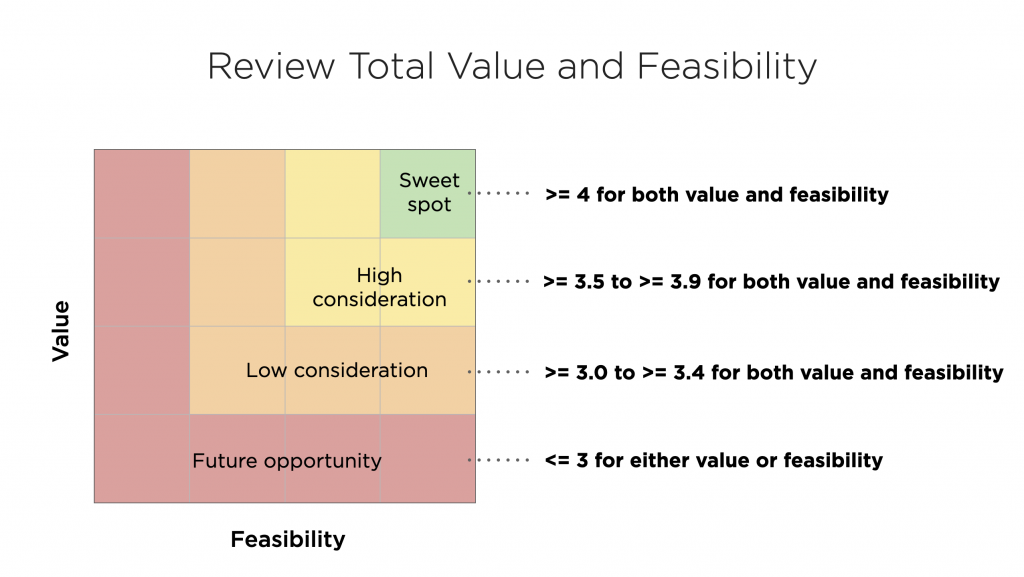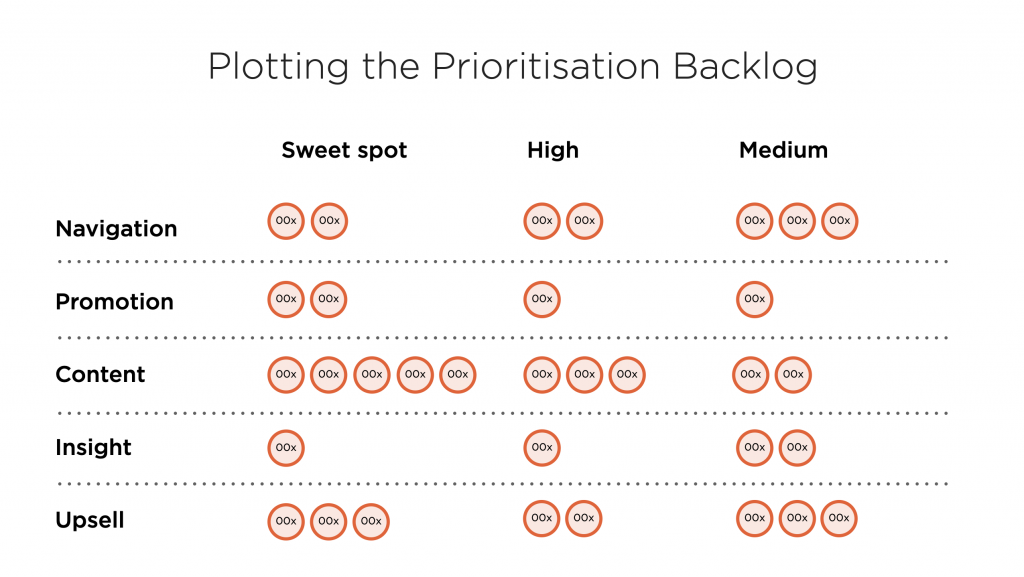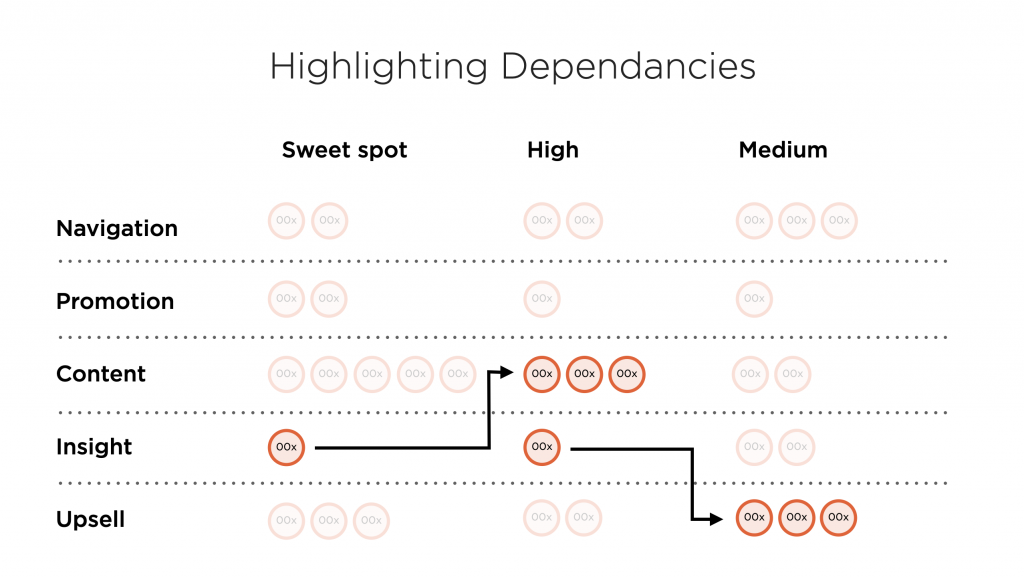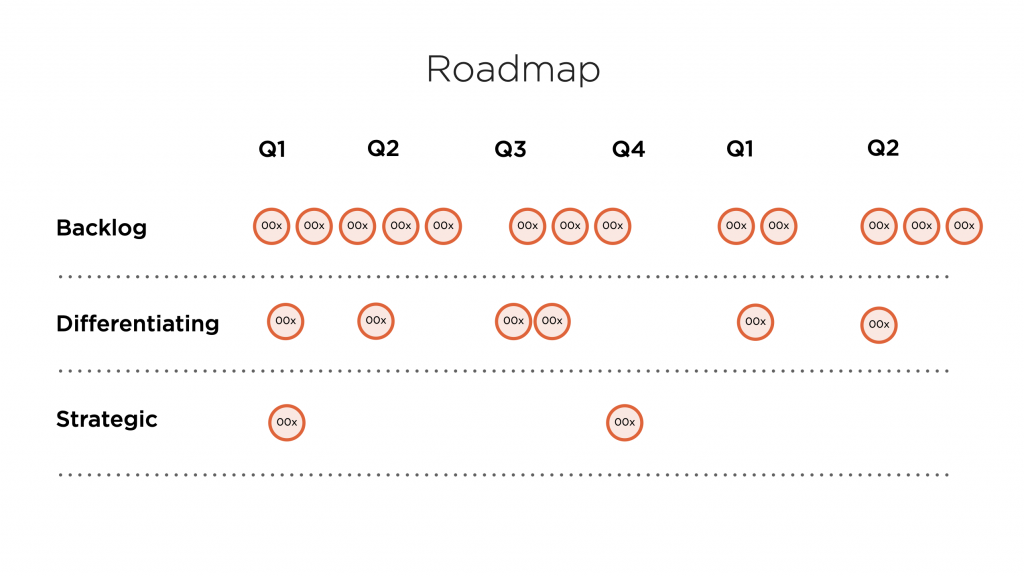
How can we plot a roadmap?
Methodology
Like many CX tools, every organisation says they have a roadmap. But when push comes to shove, what they have is a badly organised spreadsheet, only known to a few, that on closer inspection is simply grouped into some type of release schedule. It’s all about feeding the technology teams. As for the rest of the customer experience… well that’s for them to figure out.
It’s not hard to see why things take so long to achieve – everyone is flying off in their own direction. To have a single roadmap that everyone can buy into doesn’t take as much effort as you might think… so long as you have all the inputs correctly organised.
Let us look at the process in more detail:
- Review the scores from your OTEC prioritisation, especially those in the sweet spot of high value and high feasibility
- Add in those potential projects from the waterline exercise – typically high value with low feasibility
- Finally, add in those differentiating projects from your battlefield mapping
- Review the types of potential projects – are you being inclusive to as much of the organisation as possible?
- Identify clusters of requirements – ones that simply make sense to be delivered as part of one package
- Highlight dependencies – you might well need some items to be true in order to fully deliver on new projects
- Plot an 18-month timeline, where the first quarter is absolute and from there is increasingly foggy
- Share with all team members, importantly how it is continually reprioritised to harden the next quarter of projects
Outcome
The main outcome of a single roadmap is a shared vision – in what needs to be done and when. A single plan on a page doesn’t need a Jira login or some complex software, it’s only successful if everyone in the organisation can access it and understand it.
With all inputs from across the organisation and scored using a blend of people, the mindset can be changed to an appreciation of why – even if it is not popular.
Visualising all three swim lanes of initiatives is critical. For nearly every organisation I have worked with feel they are behind and need to only focus on quick wins. Sure, quick wins are useful in the short term but they rarely deliver any differentiation and long term value. With small uplifts in conversion (and revenue), these organisations become addicted to quick wins at the expense of truly delivering their strategy.
Showing the three types of initiatives alongside each other can help everyone understand the need for these to be worked on in parallel, not sequential.
Timeline: 5 weeks
- 1 week – review all prioritised requirements
- 2 weeks – work together to understand clusters and dependancies
- 1 week – plot the first quarter with exactness, the next with more wiggle-room and so on
- 1 week – share the roadmap with all employee, including the process for those who have not been party to it





A plan for everyone to understand
Create a straightforward plan and keep it updated
Prioritisation & Roadmap
How do we prioritise our requirements?
An organisation’s most significant transformation is involving stakeholders in the prioritisation process – often the most political and black box of activities. Change your methodology and tools to enable prioritisation all stakeholders can buy into truly.
How do we know where to differentiate?
You could feel like there are a million tasks on the to-do list, worrying if any of them will really make a difference in helping the organisation stand out and be famous. Put your brand values to work.
How can we plot a roadmap?
Sharing a plan can be the most important tool in enabling everyone in the organisation to understand what is being done, why, and importantly when. The work never stops – and that includes communicating.